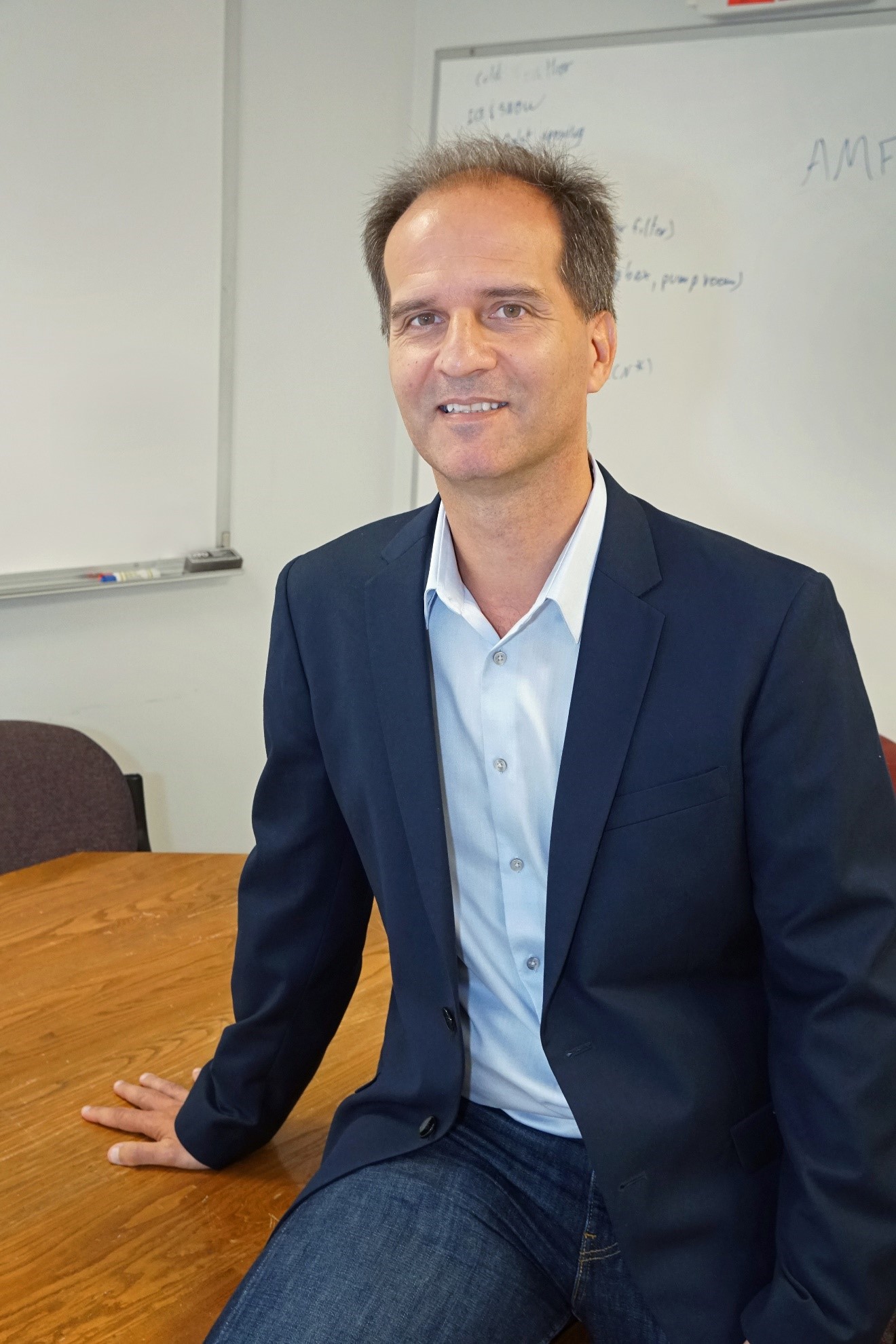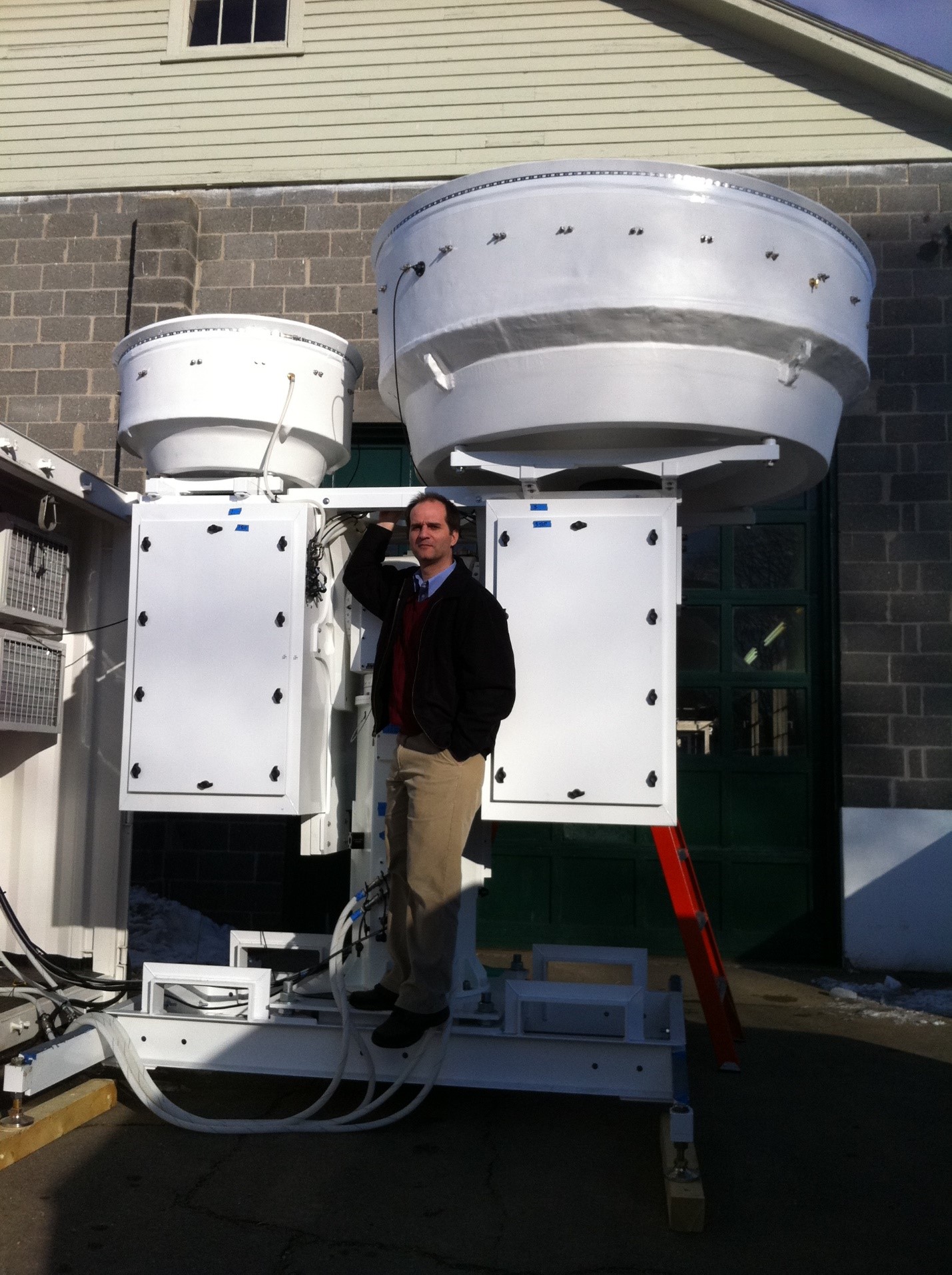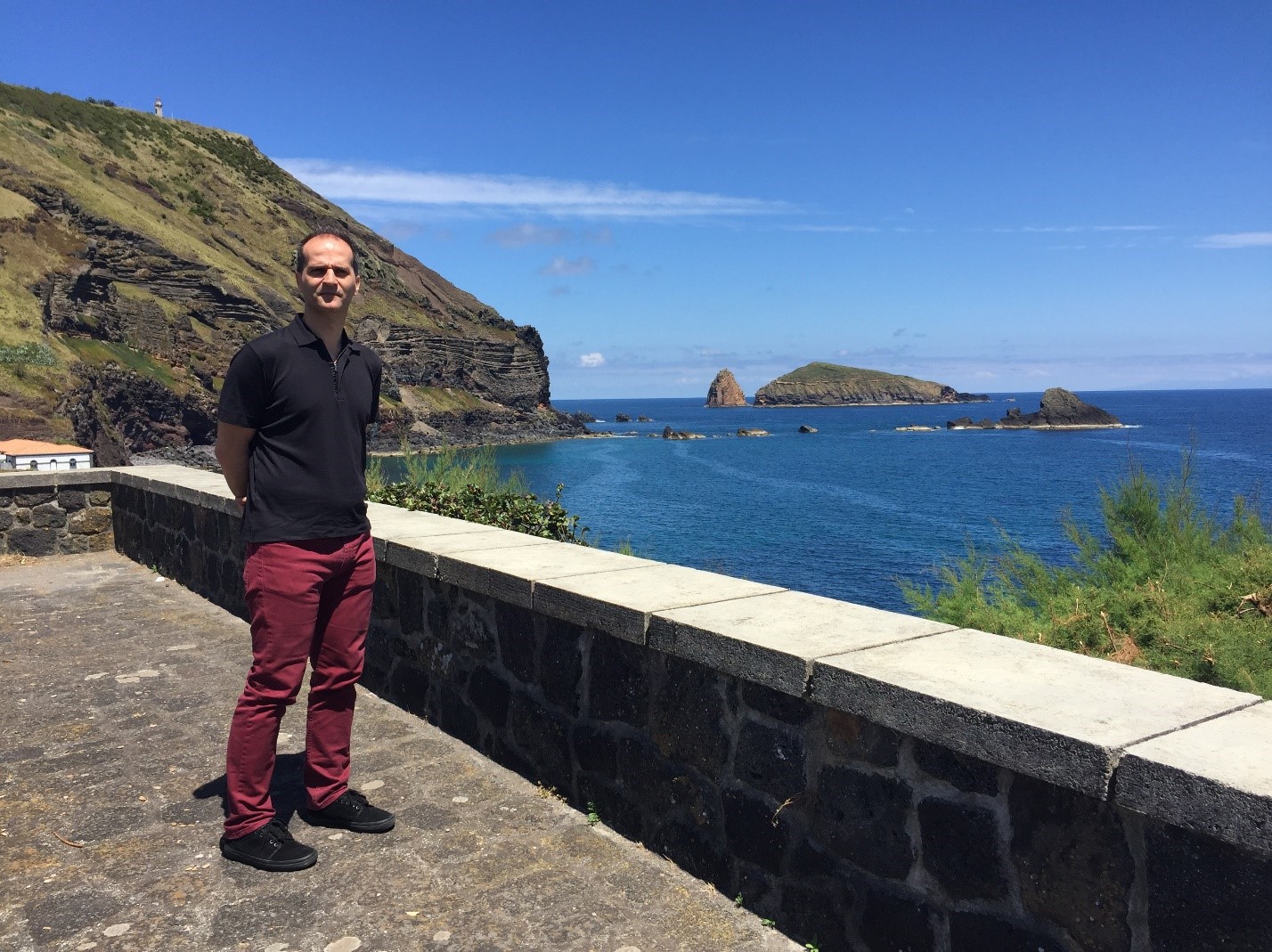UEC Profile: ‘An ARM Loyalist’
Published: 19 November 2018
As a graduate student, Pavlos Kollias discovered the allure of millimeter cloud radar, a specialty that he says put him ‘among great minds’
This is the 10th article in a series of profiles on members of the ARM User Executive Committee (UEC).

Pavlos Kollias says most people think of radars as sensors that monitor and probe weather on a synoptic scale, looking for squall lines, winter storms, and extreme weather events.
On the other hand, the short-wavelength radars that are his specialty shift the radar wavelength used from centimeters to millimeters—small enough to make atmospheric particles look “10 thousand times bigger and, thus, easier to detect,” says Kollias.
The value of such radars is not to see weather “but to see clouds, a much more difficult proposition,” he adds—though one without the immediate civil value of probing severe weather. “The value is much more difficult to extract. That is why millimeter radars came late.”
Starting in the 1990s, however, one U.S. Department of Energy (DOE) entity saw the value of investing in millimeter radars for atmospheric observations: the Atmospheric Radiation Measurement (ARM) user facility.
“ARM took these radars, made them operational 24/7, and deployed them globally, and put them on the map globally. The ARM program is synonymous with millimeter radar,” says Kollias of instruments that “can probe the internal structure of clouds.”
The self-described “ARM loyalist” works on his radar science in New York, at both Brookhaven National Laboratory and Stony Brook University.
At Brookhaven, he recently established the Center for Multiscale Applied Sensing to study complex heterogeneous systems such as urban and coastal areas.
At Stony Brook, he oversees a radar observatory for the study of winter weather.
“Funders are wary of maintaining such infrastructure on campuses,” says Kollias. It is a fact that makes ARM not only “uniquely positioned to collect long-term global radar observations, but critical for training the future generation of atmospheric scientists.”
At Stony Brook, Kollias’ Radar Science Group pursues research interests ranging from precipitation microphysics to atmospheric transport.
The group is also exploring applications for phased-array and space-borne radar technologies. For instance, it is developing algorithms for EarthCARE, a European-Japanese satellite platform scheduled to launch into space in 2021.
EarthCARE is expected to deliver unprecedented Doppler velocity measurements and information about the interactions of clouds, aerosols, and radiation—though at the price of great difficulty, says Kollias.
The satellite-borne radar system, traveling at 7,600 meters a second, is intended to retrieve vertical velocity measurements within accuracies measured at a fraction of a meter per second.
Mentoring the Next Generation

Kollias will tell you that any profile of him should be online “just for a day,” because ARM is all about “we” and “team effort,” and that all the attention in any article should go to the newest generation of experts.
“Let’s title the profile ‘Keep It Fresh,’ and make anything about me just a paragraph long,’’ he says.
It is a humble sentiment, and illustrates what Kollias says is the biggest lesson senior scientists can ever learn: Be a mentor.
Among other ways, he is a mentor in the context of ARM, where he is a member of the User Executive Committee (UEC).
The UEC provides advice and recommendations regarding the ARM user experience and serves as the official voice of the user community and as an advocate for atmospheric research.
At Stony Brook, Kollias mentors students in the Radar Science Group, including postdoctoral fellow and cloud scientist Mariko Oue, whose promising career he admires.
Over the years, Kollias has played other roles that allow him to help younger scientists. From 2007 to 2009, he was ARM’s associate chief scientist. Today he leads the radar science group for DOE’s Atmospheric System Research program.
Kollias was also active in organizing at least 10 U.S. and international summer and winter “schools”—workshops that introduce radar gear and capabilities to young scientists.
It’s all part of giving back to ARM, he says, a program that “nurtured and grew me.”
Before Stony Brook, Kollias taught at McGill University in Montreal, Canada, where he helped mentor what he calls “a high-impact group of students and postdocs who continue to play a role in ARM.”
Among the McGill diaspora now out in the working world are Brookhaven’s Scott Giangrande; the University of Illinois’ Paloma Borque (now on site for an ARM convective storm campaign in her native Argentina); McGill PhD Xiaoli Zhou, a postdoc at the University of Washington; Katia Lamer, who is finishing her PhD at Pennsylvania State University; Maximilian Maahn with the National Oceanic and Atmospheric Administration (NOAA); and two young researchers now working in Germany: Heike Kalesse at the Leibniz Institute for Tropospheric Research in Leipzig and the University of Cologne’s Stefan Kneifel.
These young scientists “are the future,” says Kollias, who also works with students as a member of the international faculty at the University of Cologne.
A Passion for Applied Science

Even before graduate work in the United States, Kollias had his own mentors.
Both his parents, prevented from going to university by what he calls discrimination, “always pushed me to pursue studies,” says Kollias.
His father, an Athens mold-maker machinist, “was very good in mathematics and physics, and in the geometry of curvatures,” he says. “Because of his influence, I was very good in science, and loved math and physics.”
At the University of Athens, he was among 300 physics majors who earned bachelor’s degrees in 1994, but only a few went on to graduate work. (He earned a master’s degree in atmospheric science there, in 1996.)
Only one of the 300 went on for a doctorate.
“There was just me,” says Kollias, who was “determined to go to the United States to study” and that his studies there would “take a practical turn. Everything in Athens was on paper.”
When he arrived at the University of Miami in 1996, “I was hungry,” he says, “and my appetite was matched by working with legends. It was perfect timing.”
One of the “legends” was cloud scientist Bruce Albrecht, who became Kollias’ dissertation advisor. He steered his eager charge away from his first interest—modeling and analytics—and toward radar work, which required a knowledge of both science and engineering.
Another legend, Doppler radar pioneer Roger Lhermitte, “taught me all about radars and was a father figure to me,” he says.
Both were fixtures at the Rosenstiel School of Marine and Atmospheric Science, where Kollias earned his PhD in 2000. Both were also “true leaders,” says Kollias, “comfortable in their own skins, appreciative of talent, and willing to open doors for others to succeed.”
Albrecht has since retired. Lhermitte, a radar pioneer whose experience went back to World War II in his native France, died in 2016 at the age of 96.
Kollias also considered the late David Atlas to be an influence. The pioneer of radar meteorology, a onetime Lhermitte collaborator who died in 2015, was a frequent visitor to Miami.
He also points to other early influences: Mark Miller (at Rutgers University); Chris Fairall (NOAA); David McLaughlin (University of Massachusetts, Amherst); and two former ARM chief scientists: Thomas Ackerman (University of Washington) and Brookhaven guest investigator Warren Wiscombe.
Athens to Miami to ARM via McGill, Brookhaven and Stony Brook: Kollias can only marvel.
He says, “It is remarkable how lucky I was.”
Keep up with the Atmospheric Observer
Updates on ARM news, events, and opportunities delivered to your inbox
ARM User Profile
ARM welcomes users from all institutions and nations. A free ARM user account is needed to access ARM data.


















